What about Paris?
Paris, often referred to as the “City of Light,” stands as an iconic symbol of art, culture, and romance. Nestled along the banks of the Seine River in northern France, Paris captivates visitors with its timeless elegance and rich history. The city is a melting pot of architectural marvels, from the historic Notre-Dame Cathedral to the modernist Pompidou Center.
Renowned for its world-class museums, Paris is a haven for art enthusiasts. The Louvre, a former royal palace, houses an extensive collection, including the enigmatic Mona Lisa. Meanwhile, the Musée d’Orsay showcases an impressive array of Impressionist and Post-Impressionist masterpieces. The Eiffel Tower, an enduring symbol of Paris, graces the skyline with its wrought-iron beauty and offers breathtaking panoramic views of the city.
Parisian cuisine is a gastronomic delight, with quaint bistros serving delectable pastries, rich cheeses, and fine wines. Strolling through the charming neighborhoods like Montmartre or the Marais reveals hidden gems, from artists’ studios to trendy boutiques. The city’s ambiance is further heightened by the Seine’s meandering waters, lined with picturesque bridges.
Culturally, Paris is a hub for literature, philosophy, and fashion. The city’s intellectual legacy is evident in its historic cafés, where great minds once gathered. As a global fashion capital, Paris hosts prestigious events like Fashion Week, showcasing the latest trends from renowned designers.
In essence, Paris is a tapestry of history, art, and joie de vivre that continues to captivate and inspire all who are fortunate enough to experience its enchanting allure.
Paris and science
Paris, a city steeped in artistic and cultural history, also stands as a bastion of scientific innovation. Amidst its grand boulevards and iconic landmarks, Paris is home to world-renowned scientific institutions and a vibrant community of researchers.
The Institut Pasteur, founded by Louis Pasteur in 1887, is a cornerstone of global biomedical research, contributing significantly to advancements in microbiology and immunology. Another prominent institution, the Pierre and Marie Curie University, bears the name of the Nobel Prize-winning scientists who conducted groundbreaking research in radioactivity.
The city’s commitment to science extends to its museums, such as the Cité des Sciences et de l’Industrie, one of the largest science museums in Europe. Here, interactive exhibits engage visitors in a journey through physics, biology, and technology, fostering a passion for scientific discovery.
Paris is also a hub for international collaboration, hosting conferences and events that bring together scientists from various disciplines. The École Normale Supérieure, a prestigious academic institution, has been a cradle for Nobel laureates and Fields Medalists, contributing to the city’s status as a global intellectual center.
In recent years, Paris has embraced sustainability and green initiatives, incorporating scientific solutions to address environmental challenges. The city’s commitment to research and development is reflected in its efforts to promote innovation in areas such as renewable energy and urban planning.
In essence, Paris not only captivates with its cultural treasures but also shines as a beacon of scientific progress, where the pursuit of knowledge and discovery harmoniously coexists with its artistic and historical legacy.
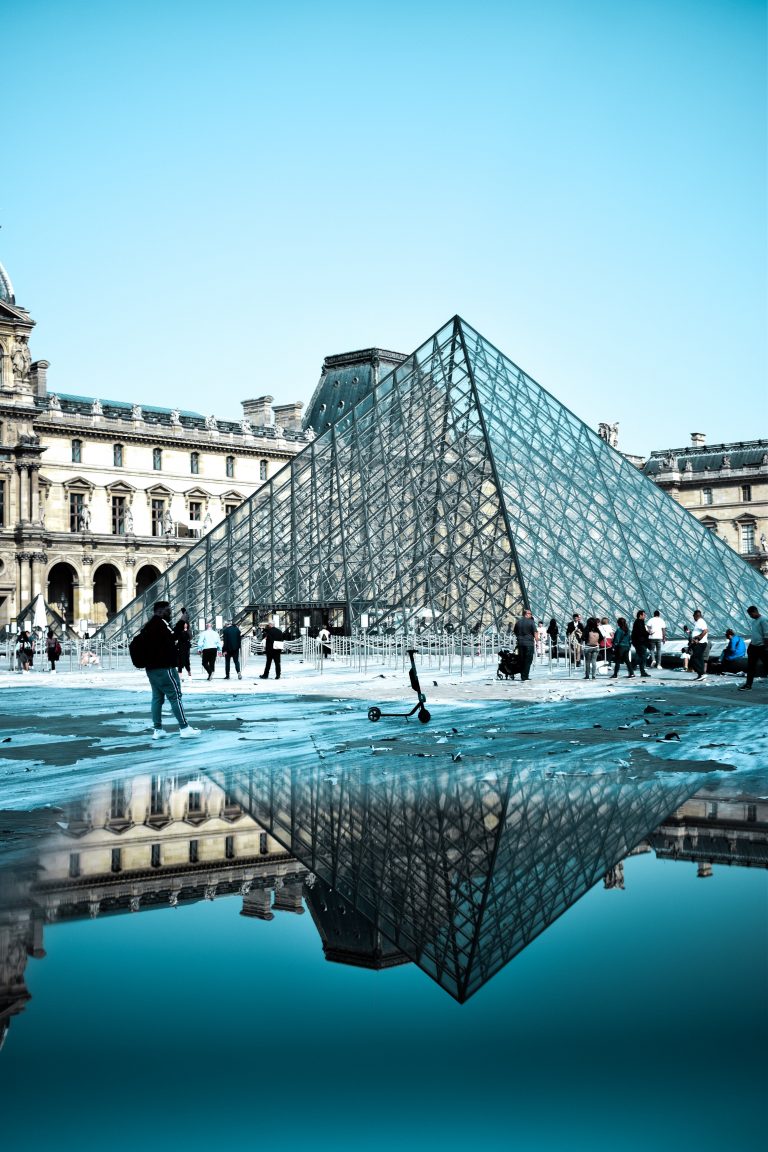
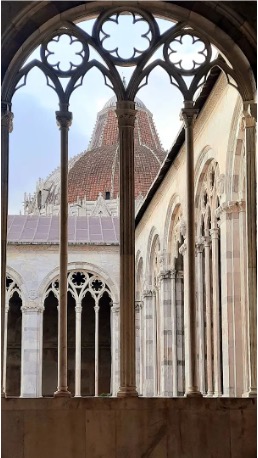
Monuments
Today, the city, severely damaged by the violent bombing and artillery in 1943 and 1944, retains splendid monuments.
In the north-west of Pisa there is an immense green lawn, known as the “Campo dei Miracoli” or the “Piazza dei Miracoli” (Field of Miracles or Square of Miracles), on which four impressive buildings stand in gleaming white marble. These imposing structures are the enormous, breathtaking Duomo (cathedral) – built almost 1,000 years ago, the cathedral’s bell tower – better known as the Leaning Tower of Pisa, the circular Battistero (Baptistery) – the largest of its kind in the whole of Italy, and the Camposanto – also known as the Holy Field, without doubt one of the most beautiful cemeteries in the world. This area of Pisa and these remarkable Pisan buildings combine Moorish, Gothic and Romanesque architectural features.
The Leaning Tower of Pisa isn’t the only edifice no longer standing upright in the city. Pisa’s unsteady, sandy soil under the Field of Miracles has resulted in other problems that initially are not quite so obvious. The baptistery leans noticeably towards the north and also, when viewed at certain angles, Pisa’s Duomo cathedral is far from straight. There are also a couple of small bell towers (campaniles) in Pisa which have also shifted and these have been nicknamed ‘The Other Leaning Towers of Pisa!’
The historic city centre of Pisa is concentrated on the north bank of the River Arno and is still surrounded by 12th-century walls. The ‘high street’ is the long and curving Via Santa Maria which connects the Campo dei Miracoli with the Lungarno (Embankment). The social centre of Pisa is the Piazza Garibaldi, located on the north side of the Ponte di Mezzo (Middle Bridge) and also the elegant Borgo Stretto, full of interesting shops and cafés. There are also many tourist attractions nearby in the neighbouring cities of Florence and Lucca.
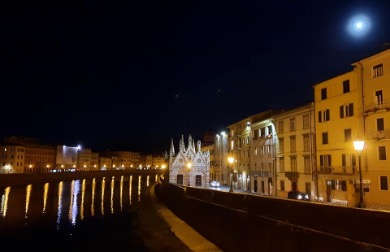
The University of Pisa
Pisa is also known for its excellent University, which was established in 1343 and has become one of Italy’s top schools. The University of Pisa is one of the most renowned Italian universities. It was formally founded on 3rd September 1343 by an edict of Pope Clement VI, although there had been lectures on law in Pisa since the 11th century.
The University has the oldest Botanical garden founded in 1543 by naturalist, doctor and botanist Luca Ghini (1490-1556), the Botanic Garden is the first university botanic garden in the world.
Originally built on the banks of the river Arno, it was moved to the current site in 1591 and then gradually expanded up to about two hectares. It houses plants from several continents: the succulents of the African and American deserts, the aromatic plants of the Mediterranean maquis, the species of the Tuscan wetlands, and numerous centuries-old trees. In the Botanic Garden are also cultivated several endangered plants of conservation interests.
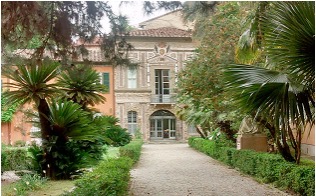
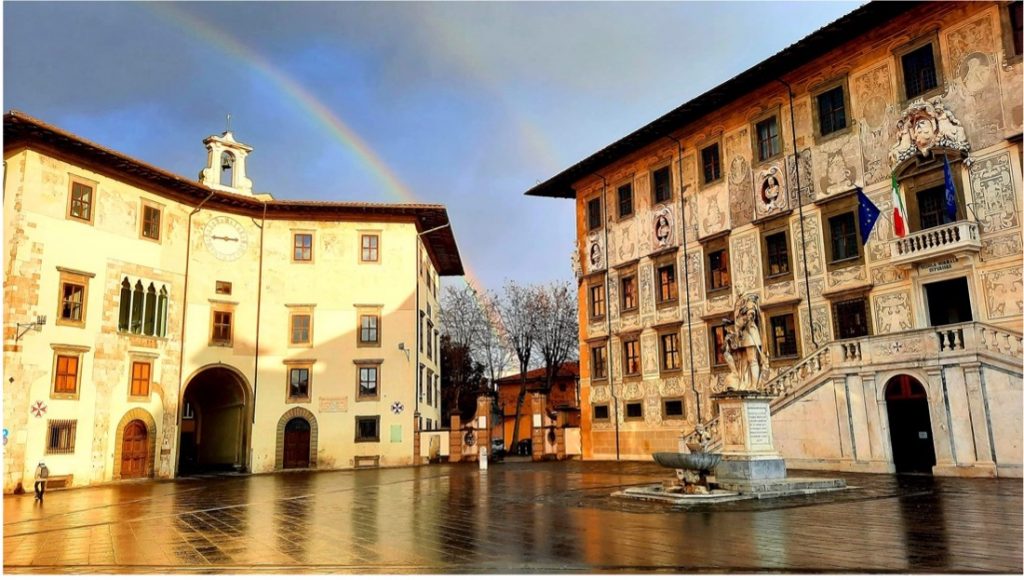
Tuttomondo
Pisa houses the last mural made by US street artist Keith Haring before his death in 1990: ‘Tuttomondo’. The work, a tribute to life and peace in the world, originated from the encounter between the artist and an Italian student in New York who invited him to visit his hometown, Pisa. Keith was deeply touched by the zest of the city, but above all by the pastel colors of the Sant’Antonio District, to the point that he made an incredible mural that became the symbol of Pisa’s regeneration in the 90s.
‘Tuttomondo’, painted on the exterior wall of the Convent of St. Anthony Abbot, covers an area of 180 square meters and consists of 30 colorful figures joined together: every character, in a special symbolic pose, dances to the rhythm of an African dance and represents a message of peace:
The anthropomorphic animals symbolize man’s love for nature.
The three world’s concentric ethnic figures, holding a heart in their hands, represent the fight against racism.
The man forming the symbol of infinity with his body is the metaphor of the endless cycle of life.
The Pisan cross, the symbol of the city, is represented by the four figures joined at the center of the mural the woman with the baby in her arms is a symbol of maternity the television represents openness to the world the man-scale is a symbol of ambition.
The hand with five men symbolizes human labor.
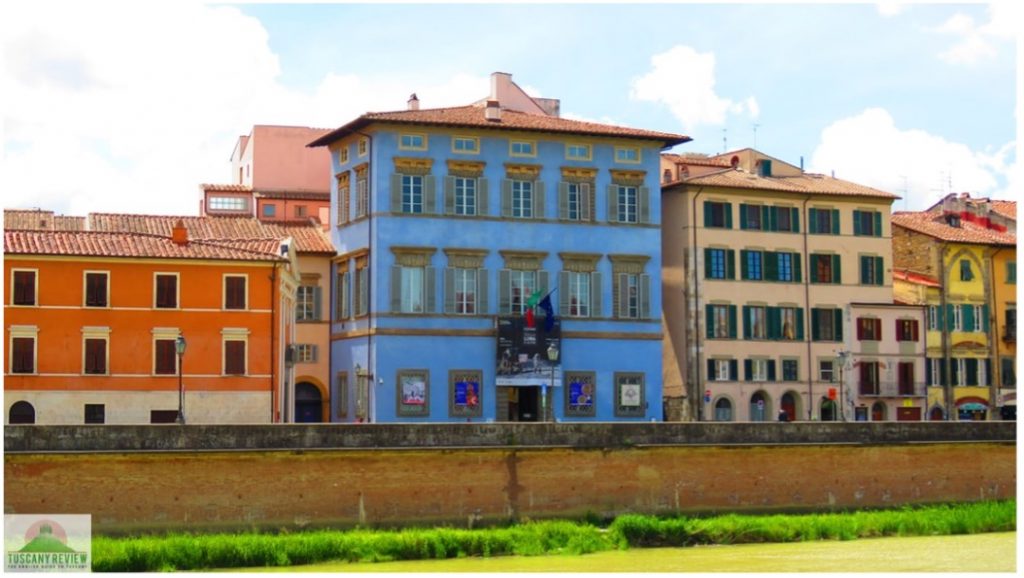
Santa Maria della Spina is a small church erected around 1230 located on Arno riverbank like a little gem and is an extraordinary example of Pisan Gothic. It was originally an oratory: its name comes from the reliquary containing a thorn from Christ’s crown, which the small church acquired in 1333, though it is today found in the Church of Santa Chiara.
The church has undergone numerous changes, especially given its proximity to the Arno, which is a threat to its stability: the most radical renovation was in 1871, when it was dismantled and rebuilt higher up the river. The church was raised about a metre, many sculptures were replaced with copies and the sacristy was knocked down.
The church was recently restored and is open to the public a few days per week. Inside visitors can admire the impressive Madonna of the Rose by Andrea and Nino Pisano, other furnishings not removed from the church and temporary exhibitions that are occasionally hosted inside the building.
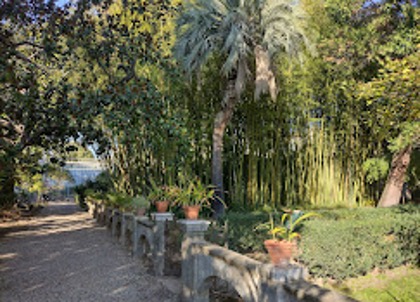
Botanic Museum
Descendant of the ancient Gallery established in 1591 by the Grand Duke of Tuscany Ferdinando I de’ Medici, it still preserves the Quadreria, composed of seventeeth-century portraits of illustrious botanists, the monumental entrance door to the Gallery, and the “Studiolo” used to study and preserve the seeds of the Botanic Garden. It also houses objects related to the teaching of botany since the end of the eighteenth century.
Some are true works of art, such as the botanical models in wax and plaster and the water-coloured teaching tables (19th century).
Other collections hosted are: the in vitro samples of plants, the xylotheque, the teaching models, the botanical instruments and the paleobotany collection.
Finally, at the Botanical Museum, thanks to a multimedia station, it is possible to make a virtual visit among the dried plants (exsiccata) of the herbarium (Herbarium Horti Botanici Pisani), otherwise accessible only to scholars upon reservation.
The University of Pisa is part of the Pisa University System, together with the Scuola Normale Superiore and Sant’Anna School.
The university now has about 48,000 students and consists of 11 faculties and 56 departments offering a notable amount of courses in their related field of studies.
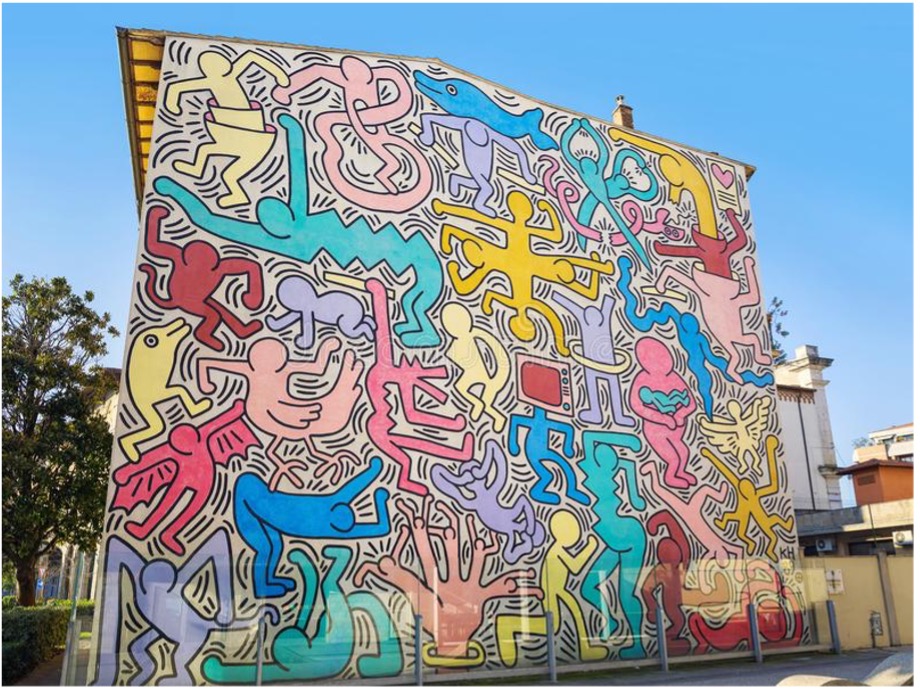
Palazzo Blu
It is the center of temporary exhibitions and different cultural activities managed by Palazzo Blu Foundation
Located on the southern side of Lungarno in the heart of the historic center of the city, a few steps from Ponte di Mezzo and Palazzo Gambacorti, the Town Hall, the ancient noble mansion restored by Pisa Foundation, and run by Palazzo Blu Foundation, is a modern instrument for the enrichment of the city’s cultural offer and is part of the wider tourist development project of the museum circuit overlooking Lungarno, the arterial road of great historical and cultural value that crosses the city from east to west.
How to reach Paris and move around
Train
Travelling by train is the best way to travel from Pisa to other destinations across Italy.
The ticket office is open between 06:00 and 21:00, or self-serve ticket machines are available all the time. If you’re only travelling a short distance (20km or less) you can buy train tickets from local newsagents. Popular day trips by train from Pisa include Florence (around an hour journey for around 8€) Lucca (15-minute journey for around 5€) and Livorno (15-minute journey for around 3€). Visit the Trenitalia website for information about timetables and fares.
For more info on Italian trains click here.
Car
While travelling around Pisa by car isn’t always an efficient option due to a high volume of daytime traffic, hiring a car is a great way for you to explore Pisa’s outskirts and places further beyond the city.
You’ll get the best price if you book in advance through a provider, where you can pick up a car from either Pisa Airport or the central train station.
Cars for rent are available at the International Galileo Galilei Airport of Pisa, were more than 10 car rental companies operate. Either way, one aspect all tourists getting around by car should keep in mind is that most of the historic centre of Pisa is out of reach if opting for a car, given the centre is under the ZTL (Limited Traffic Zone) restrictions, only public transportation means and resident and authorized vehicles being able to gain access to this area.
Airplane
Pisa has its own airport, reached by many companies including low cost ones.
Pisa airport is located along the coast at only 1 km from the city of Pisa, is accessible from the A11 and A12 motorways, from the Florence-Pisa-Livorno highway, from the normal city roads, and from the railway network.
The airport of Pisa and the train station Pisa Centrale, the city main train station, are connected by the PisaMover, a high-speed shuttle service that runs every day from 6 a.m. to midnight, every 5/8 minutes. The average travel time between the airport and the station is about 5 minutes.
For more info on Pisa airport click here.
Around 80 km from Pisa, and 4 km from the centre of Florence, is located the “Amerigo Vespucci” Airport. Pisa can be reached by train, bus and taxi (around 170 euros). For more Info please visit this link.
Pisa can be reached by train from other airports In Italy.